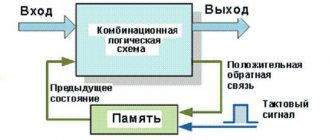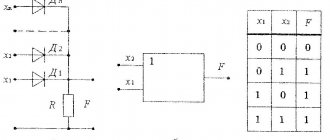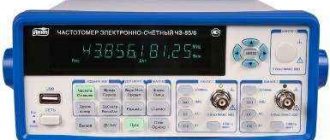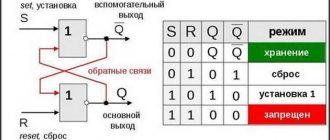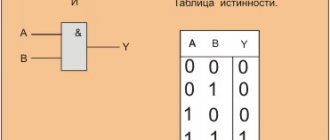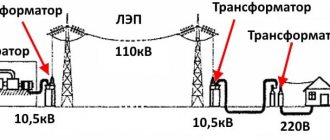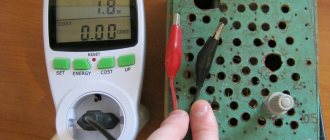What are logical triggers?
A trigger is the simplest sequential device that can be in one of two possible states and transition from one state to another under the influence of input signals. A trigger is the basic element of sequential logic devices. Trigger inputs are divided into information and control (auxiliary). This division is largely arbitrary. Information inputs are used to control the trigger state. Control inputs are typically used to preset a flip-flop to some state and for synchronization.
Vasiliev Dmitry Petrovich
Professor of Electrical Engineering, St. Petersburg State Polytechnic University
Ask a Question
Triggers can have 2 outputs: direct Q and inverse Q.
Triggers are classified according to various criteria, so there is a fairly large number of classifications. Unfortunately, these classifications do not form a coherent system, but an engineer needs to know them.
Trigger classification
- by the method of receiving information;
- according to the principle of construction;
- by functionality.
Asynchronous trigger
Asynchronous trigger - changes its state immediately at the moment the corresponding information signal appears.
Vasiliev Dmitry Petrovich
Professor of Electrical Engineering, St. Petersburg State Polytechnic University
Synchronous triggers - react to information signals only if there is a corresponding signal at the so-called synchronization input C (from the English clock). This input is also designated by the terms “strobe”, “tact”.
Synchronous triggers
Synchronous flip-flops, in turn, are divided into flip-flops with static (static) and dynamic (dynamic) control via the synchronization input C. Static flip-flops perceive information signals when a logical one (direct input) or a logical zero (inverse input) is applied to input C.
Dynamic triggers perceive information signals when the signal at input C changes (changes) from 0 to 1 (direct dynamic C-input) or from 1 to 0 (inverse dynamic C-input).
Static triggers
Static triggers, in turn, are divided into single-stage (single-cycle) and two-stage (push-pull). A single-stage trigger has one stage of storing information, and a two-stage trigger has two such stages. First, information is recorded in the first stage, and then rewritten into the second and appears at the output. A two-stage trigger is designated by TT.
Designation of trigger inputs
Flip-flop inputs are usually designated as follows:
S —input for setting to state “1”;
R —input for setting to state “0”;
J - input for setting to state “1” in a universal trigger;
K - input for setting to state “0” in a universal trigger;
T — counting (general) input;
D — input for setting to state “1” or state “0”;
V - additional control input to allow receiving information (sometimes the letter E is used instead of V).
Let's look at some types of triggers and their implementation on logical elements.
Practical use
Most often, a trigger is used to generate a signal whose duration corresponds to the duration of the process in the system it controls. It can either directly resolve its beginning and end, or transmit information to other elements that the process has started. In this way, control of the system is achieved; then you only need to take care of resolving the situation of uncertainty.
The second important function of a trigger is process synchronization. This helps eliminate unnecessary and random pulses that occur, for example, when several input signals change within a very short period of time. In addition, with the help of triggers, you can “pass” only pulses of full duration into the system or delay incoming information.
The implementation of triggers and their use in practice occurs in various devices for memorization and memory storage. It is this element that represents a basic RAM cell capable of storing 1 bit of information in a static state. In addition, it is used for the following purposes:
- as components for creating microcircuits for various purposes;
- as an organizer of computing systems;
- in shift and storage registers;
- for the manufacture of semiconductor systems such as transistors and relays.
A trigger is not only a basic element of electronics, but also the simplest cybernetic device capable of performing its logical function while simultaneously maintaining feedback. Thus, it is used to create many mechanisms whose purpose or operating condition is the ability to remember, store, transmit and transform information. You can find a trigger in any device, from power switching systems to elements of digital microelectronics.
Creating spare parts for computers, mobile phones, robots, control panels, vehicles and many other devices is impossible without the use of triggers. They are also used for the manufacture of simple circuits based on electromagnetic relays - such designs are still used due to their simplicity and high immunity to interference, despite their high energy consumption.
Asynchronous RS flip-flop
Let us turn to an asynchronous RS trigger, which has a conventional graphic symbol shown in Fig. 3.54.
The trigger has two information inputs: S (from the English set) and R (from the English reset).
It is convenient to describe the law of operation of triggers using a transition table, which is sometimes also called a truth table (Fig. 3.55). S', R', Q' denote the corresponding logical signals occurring at some time t, and Qt + 1 the output signal at the next time t+1.
The combination of input signals S' = l, R' =1 is often called forbidden, since after it the trigger finds itself in a state (1 or 0), which is impossible to predict in advance. Such situations should be avoided.
The trigger in question can be implemented on two NOR elements (Fig. 3.56).
It is necessary to ensure that this circuit functions in full accordance with the transition table above.
The K564TP2 microcircuit contains 4 asynchronous RS triggers and one control input (Fig. 3.57).
Abrahamyan Evgeniy Pavlovich
Associate Professor, Department of Electrical Engineering, St. Petersburg State Polytechnic University
When a low level is applied to the input V, the outputs of the triggers are disconnected from the pins of the microcircuits and go into the third so-called high-impedance state. When a logical signal “1” is applied to input V, the flip-flops operate in accordance with the above transition table.
In an asynchronous RS flip-flop using NAND elements, switching is performed by a logical “0” applied to the R or S input, i.e., the inverse of the previously discussed transition table is implemented (Fig. 3.58). A prohibited combination corresponds to logical “0” at both inputs.
Symmetric
A symmetrical trigger refers to a special type of element. It is created using transistors and is a two-stage DC amplifier. The device operates by using transistors with completely identical parameters.
The operating principle is as follows:
- When voltage is applied to the device, transistor VT1 is considered open. Its collector voltage is 0.
- At this moment, transistor VT2 is closed. Its collector has a positive voltage.
- To effect a transition from one state to another, a voltage pulse is used. This pulse is created by a capacitor.
- When a pulse appears, the transistors change their state.
When changing the position of the transistors, a voltage drop is created and it decreases significantly.
In symmetrical flip-flop circuits, the main element is the triggering system. It may differ in the control method and the place from which the starting impulse came.
- Separate control. Involves supplying voltage to a specific trigger input. With this control, the element is considered an RS trigger.
- General or accounting management. Voltage is supplied to the common input pin. With this connection, the device is similar in parameters to a T-trigger.
The source of the pulse can be from the collector or base of the transistor. With such connection schemes, there is a possibility of a false or secondary signal. It is cut off by connecting a diode.
The main disadvantage of symmetrical elements is their complete dependence on the time of arrival of the pulse signal and its duration. If the duration is insufficient, the pulse will not have time to open the transistor, which means the second transistor will not close.
Such devices are used in pulse metering devices, frequency generators, and radio-electronic circuit switches.
Synchronous RS trigger
Consider a synchronous RS flip-flop (Fig. 3.59).
If the input C is logical “0”, then both the output of the upper input element “AND-NOT” and the output of the lower one will be logical “1”. And this, as noted above, ensures the storage of information.
Vasiliev Dmitry Petrovich
Professor of Electrical Engineering, St. Petersburg State Polytechnic University
Ask a Question
Thus, if the input C is logical “0”, then the influence on the inputs R, S does not lead to a change in the state of the trigger.
If a logical unit is applied to the synchronization input C, then the circuit reacts to input signals in exactly the same way as the one discussed earlier (Fig. 3.56).
Definition
What is a trigger? A trigger is an electronic device that has the ability to remain in one of two stable states for quite a long time, as well as alternate between them due to the influence of some external signal. A trigger is essentially a simple piece of electronics on which the performance of more complex systems depends.
It is capable of storing binary information (zero or one) after the input pulses cease to operate. The main purpose of the device is to switch from one state to another. The trigger stores 1 bit of information in its memory, which determines its current state: logical “0” or logical “1”.
What inputs does a trigger have? Any trigger can have several inputs, which are:
- Informational. They are responsible for the general condition of the device at the time of operation of the entire circuit.
- Managers. They are responsible for setting the trigger to a preliminary position and for its further synchronization.
The operation of the device is based on 2 elements “AND-NOT”, 2 “OR-NOT” and others; some types of flip-flops operate on logical elements CMOS, TTL, ESL. The operating principle of any trigger depends on the number of inputs/outputs, as well as on the type of device itself.
Electronics uses devices based on transistors or microcircuits. Transistor models are used for complex integrated circuits of the old type. The logic chip is smaller in size and stores information without overheating or overloading. Therefore, they are used in smaller and more complex circuits of modern electronics.
MS type trigger
Let's consider the principle of constructing a two-stage trigger, which is also called an MS type trigger (from the English master, slave, which is usually translated as “master” and “slave”). Its simplified block diagram is shown in Fig. 3.60. The circuit has two single-stage triggers (master M and slave S) and two electronic keys (Cl1 and Cl2).
The timing diagram of the synchronization signal, explaining the operation of the trigger, is shown in Fig. 3.61.
Let's consider a number of time intervals of the indicated diagram:
t < ta — the leading trigger is disconnected from the information inputs, the slave trigger is connected to the master;
ta < t < tb — the leading trigger is disconnected from the information inputs, the slave trigger is disconnected from the master;
tb < t < tc — the master trigger is connected to the information inputs, the slave trigger is disconnected from the master. The master flip-flop records the information supplied to the inputs;
tc < t < td — the leading trigger is disconnected from the information inputs, the slave trigger is disconnected from the master;
td < t - the master trigger is disconnected from the information inputs, the slave trigger is connected to the master, information from the master trigger is rewritten to the slave. This occurs immediately after time td and means that, in fact, a two-stage flip-flop is triggered when the clock signal changes from 1 to 0. In this case, the output signals are determined by those input information signals that occurred immediately before the negative edge of the clock signal.
Why are triggers used in marketing and personal promotion by experts?
In marketing, triggers are most often strong visual images, sounds and text. They also evoke strong emotions, as well as the desire to possess, buy, download and engage in online discussions.
Triggers are used to:
- sell (which means the target action for the reader is to buy);
- engage (target action - comment, increase coverage);
- remove the objection (and the reader watches the demo lesson or reads the FAQ);
- launch word of mouth (the audience wants to share the content);
- demonstrate expertise/express the author’s position (and if the reader remains, it means he accepts these conditions).
JK trigger
Let's consider a JK flip-flop (from the English jump and keep), which differs from the considered RS flip-flop in that the appearance of logical units at both information inputs (J and K) (for direct inputs) leads to a change in the state of the trigger. This combination of signals for a JK flip-flop is not prohibited.
Otherwise, the JK flip-flop is similar to the RS flip-flop, with the role of the S input being played by the J input, and the role of the R input being played by the K input.
JK flip-flops are implemented as MS flip-flops or as dynamic flip-flops (i.e., JK flip-flops are synchronous).
In Fig. Figure 3.62 shows a conventional graphic designation of a two-stage JK trigger.
Let's turn to dynamic triggers. They are characterized by blocking information inputs at the moment when the received information is transmitted to the output. It should be noted that in terms of response to input signals, a dynamic trigger, triggered when the signal at input C changes from 1 to 0, is similar to the considered two-stage trigger, although they differ in internal structure.
For direct dynamic C-input, use the designations shown in Fig. 3.63, a, and for the inverse dynamic C-input, use the notation shown in Fig. 3.63, b.
Advantages of using flip-flop logic circuits
Having figured out what a trigger means, it’s easy to use the knowledge gained to solve practical problems. Using logical elements:
- automate the operation of lighting systems;
- provide safe connection of machines and other powerful loads;
- prevent dangerous conditions using signals from external sensors.
To create a high-quality device based on triggers, it is recommended to use the presented information in combination. The actual operating conditions must be taken into account in order to select suitable functional components of the design.
D-trigger
Let's consider a D-flip-flop (from the English delay), which repeats the input state at its output. Speaking purely theoretically, a D-flip-flop can be formed from any RS or JK flip-flops if mutually inverse signals are simultaneously applied to their inputs (Fig. 3.64).
Abrahamyan Evgeniy Pavlovich
Associate Professor, Department of Electrical Engineering, St. Petersburg State Polytechnic University
Information storage in D-flip-flops is ensured by synchronization, therefore all real D-flip-flops have two inputs: information D and synchronization C. In this flip-flop, the input signal is recorded by the synchronization signal and transmitted to the output. Since the output information remains unchanged until the next synchronization pulse arrives, the D flip-flop is also called a flip-flop with information storage or a latch flip-flop.
The graphical symbol for a D-flip-flop is shown in Fig. 3.65.
